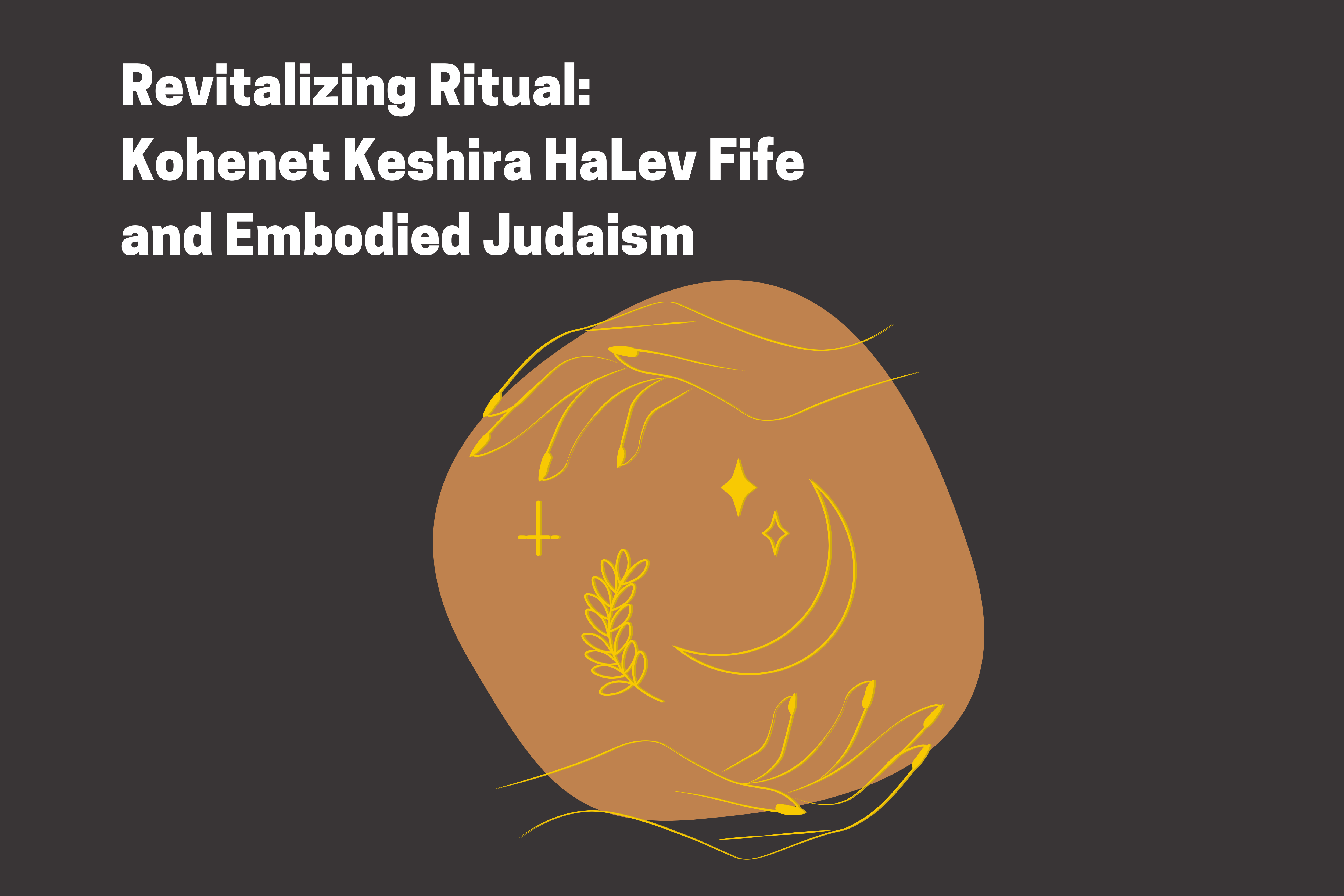
Keshira Ha Lev Fife remembers standing in front of their first-grade class and proclaiming that they wanted to be a rabbi when they grew up. They eventually found a path towards Jewish clergyhood that resonated deeply with their conceptualization of Judaism and Jewish leadership: the Kohenet Hebrew Priestess Institute. Today, Kohenet Keshira, as they like to be called, serves as the Oreget Kehillah (known in other settings as an Executive Director) of the Kohenet Institute and is empowering Jews on the margins to embrace and embody emerging forms of Judaism.
For Kohenet Keshira, becoming a leader who creates space for others’ spirituality to blossom has been a journey that required them to understand themself as whole even when others did not. “First it was resilience building and healing. In retrospect, I had [to confront] discomfort in my own being,” they said. Much of this discomfort stemmed from the pressures Kohenet Keshira felt as a queer multiracial Jew.
“To enter Jewish spaces as a biracial person, the movement that comes into my body is turning my face from one side to the other,” Kohenet Keshira began, turning their face as they spoke. “I had to show one side of myself to the people around me, and the other side—the queer side, the Filipinx side—I didn’t. I felt I had to mirror the people I was seeing in order to be accepted.”
Kohenet Keshira’s description of feeling the need to mirror the dominant group in their Jewish community echoes the participants of Beyond the Count who indicated they often feel the need to conform or change how they present themselves in Jewish spaces in order to be accepted.
Kohenet Keshira’s relationship with Judaism has greatly expanded since then. They recall that growing up, Judaism was very matter-of-fact with a prescribed structure. “I grew up with a sense that Jewish things are just what we’re obligated to do. We go a couple times a year, this is how the service goes. New shoes, uncomfortable clothes, wear tights, all that.” It wasn’t until they visited a Chabad service that they realized Judaism could look many different ways. “It was so liberating to come into a space where people were really praying with their bodies: moving, crying, singing loudly, niggun-ing.”
When they later prayed with the Kohenet community, Kohenet Keshira was further moved. “I’ll never forget the first time I davened with the Kohenet and I saw people laying belly to the ground during the Mourner’s Kaddish.” The difference Kohenet Keshira felt between the Judaism in front of them and the Judaism they had known was palpable—even uncomfortable. “But I allowed myself to sit with it. To ask myself, why am I so damn insistent that certain prayers are said a certain way? Yes, there’s power in tradition and doing things collectively, and there’s also necessity to ask questions and experiment.”
Experimentation, for Kohenet Keshira, is the name of the game when it comes to contributing to the contemporary practice of Judaism. “Judaism is precious and strong. It can withstand some tinkering and some exploration and experimentation,” Kohenet Keshira said in a calm and loving voice. “In fact, Judaism writ large is a grand experiment. It always has been.”
One example of what Kohenet Keshira calls “kinking the chain of tradition” began as a means of navigating the pandemic. As Jewish communities across the U.S. and beyond grappled with how to hold high holy days in the first year of the pandemic, Kohenet Keshira and their community decided to do tashlich—the casting away of crumbs on Rosh Hashanah—in kayaks.
“We’re actually doing it for a third year now,” Kohenet Keshira stated. While this may seem like a small change, it represents a bigger story about actively contributing to the construction of Judaism. “Fast forward one hundred years from now. People might be saying ‘my great grandparents started this tradition in the time of the COVID plight,’” they said tearing up.
Kohenet Keshira explained that what might feel like “just making do” in the tumultuous times can actually become part of tradition in a powerful way. “We never know when we’re starting a new tradition, or maybe ending one. If we’re not careful, if we’re not thoughtful about how we’re making changes, we could lose something precious.”
As Kohenet Keshira contributes to the building of today’s Judaism, they are cognizant to honor ancestors, thinking ahead to the impact today’s choices may have on future generations, and reminding those of us who are here now that we are empowered to do the same. “It’s a great responsibility and it’s also a great joy to think that something we’re doing could re-enliven us, could create a spark in someone and help them remember what they’re made of.”
Kohenet Keshira wants to encourage other Jews, especially those of us whose identities have lived in the margins, to feel empowered to take on this responsibility with both seriousness and joy, tenderness and curiosity. “There is something powerful about what people are doing on the margins. It’s a reminder that Judaism doesn’t belong to white Ashkenazi Jews, and we don’t need permission. We are entitled and empowered to define our own identities.”


